Review: Detail notes for builders of the new Tamiya Spitfire
This is from Jennings Heilig, who has been doing a lot of research forthe new Fundekals decal sheet for the Spitfire I coming soon:
There's probably a flurry of Tamiya 1/48 Spitfire Mk.Is being built this week. Having just done a BUNCH of research on Mk.Is in service from 09/1939 up through early 1941 (when the Mk.Is were phased out of frontline service), let me offer the following thoughts to improve your models:
-
Only the K and L serial number blocks were built with the "pole" type aerial mast. The wire HF antenna was routed through the mast, and exited at the top, then connected to the small post at the top of the rudder. I haven't been able to find any photographic evidence that the pole type mast was replaced with the later aerodynamic style mast, but I find it hard to believe that if an aircraft was damaged and rebuilt at Morris Motors or the Maintenance Units that it wouldn't have been replaced. The pole type mast was mounted in a rectangular metal panel, noticeably different from the teardrop shaped panel of the later style mast.
-
Per the late, great Spitfire boffin off all Spitfire boffins, Edgar Brooks (RIP), the synthetic resin bonded paper (SRBP) seats (NOT, repeat NOT ever, period, made of Bakelite) were not installed at the factory until mid-May 1940. Before that, metal seats were the standard, and Edgar states that wreck site evidence shows both interior grey-green and black were used for seats. Additionally, SRBP seats were an alternative, not a replacement for metal seats, so both could be and were seen interspersed in production aircraft for some time after May 1940. Also, there is no "correct" color for the SRBP seats. They varied from a fairly bright reddish brown to an almost chocolate brown color, sometimes on various parts of the same seat.
-
Very late in the Battle of Britain period (probably late September), the TR11333 VHF radio set began to replace the TR9 HF set. Being a much shorter wavelength set, the VHF required a much shorter antenna, which was contained completely within the metal mast, with no external wire visible. The triangular wire guide on the trailing edge of the mast was removed, and in most cases, the small post on top of the rudder was removed.
-
Tamiya would have you paint the teardrop shaped base for the later style antenna mast black. I've seen no photographic evidence to support that ever having been the case. I believe it was made from the same type of SRBP material as later Spitfire seats, and was the same range of red-brown to brown colors as the seats. It's possible that on later rebuilds that were painted at unit, MU, or rebuild contractor level this may have been painted in the local camouflage color, but it's difficult to tell in most b&w photos. Lacking other evidence, I'd paint it a dark red-brown color and you're more likely than not to be correct.
-
The Mk.1 IFF set was still in testing during most of the early war and Battle of Britain period. The presence of this equipment is evidenced by the two wire "cheese slicers" strung from the leading edge of the horizontal stabs to a point on the side of the fuselage, generally somewhere within the roundel. Tamiya (2018) has molded the lead-in insulator on the fuselage and a microscopic little pip on the stab leading edge. The first sets were fitted in late September 1940, but supplies were slow in coming, so the VAST majority of Spitfires up through the end of 1940 and into early 1941 did NOT have them fitted. The lead-in insulator location should be filled and sanded and the pip removed from the stab.
-
Lower surface colors: you'll have to wait for our upcoming decals for a more in depth treatise on this subject, but what I want to point out is that many (MANY) BoB period aircraft left the factory with a curved upper/lower demarcation on the lower cowling that did not follow the straight panel line between the side and lower cowling panels. When the earlier night/white/aluminum bellies were overpainted with any of the rainbow of possible colors when "Sky" was introduced in mid-June 1940. Generally speaking, the new color (which may have been Sky, light blue, or any of a hundred other colors) followed the curved demarcation. When the factories caught up with the change, they tended to paint the Sky belly up to the edge of the lower cowling panel line and not use the curved demarcation.
-
Weathering. Huge. Can. Of. Worms. But what I'm going to tell you here is fact, not opinion. As an aside, I strongly recommend you get yourself a copy of "The Most Dangerous Enemy" by Stephen Bungay and read it. If you have even the slightest interest in the BoB, it's pretty much the seminal work on the subject. It will give you perspective on this. During the BoB period, the RAF was running through Spitfires (and Hurricanes) and pilots at an alarming rate. The weather in the British Isles and northern France in the spring and summer of 1940 was noted for being exceptionally fine. There were very few days where weather precluded flying activities. There was very little rain (and thus very little mud). Given that the majority of Spitfires that took part in the battle were at most a few months old, and in some cases a few days old, and that there was not a lot of sloppy weather that made airfields a mess, you need to keep the weathering to a screaming minimum. Yes, you can find photos of older Mk.Is with chipped up paint on the wing roots where the "erks" tromped on them, but that was the exception and not in any way the rule. You also generally don't see a huge amount of exhaust staining on these aircraft. Less, in this case, is definitely more.
-
Gun panels: The .303 Brownings could be re-armed between sorties from the bottom. The four panels that covered the guns (the ones with the shell/link ejector slots in them) were completely removable (vs. being hinged). When you start looking at photos, you very often see these panels very darkly stained. We have read accounts of the erks cleaning the cordite smudges from these panels with gasoline, which would have probably made them grubbier rather than cleaner. They were also laid on the ground while the guns were being serviced, adding to their general grubbiness. Again, look at photos, don't take my word for it. Gun stains ranged from non-existent to positively horrible, so again, look at photos. The red muzzle cover patches were almost universally used, but ranged in size from about 4" square up to gigantic ones that would cover both of the middle guns with a single large rectangular piece.
-
Gas detection patches. You often see this yellow-green paint depicted as the same yellow as the roundel ring. We've done a good bit of research on it, and it turns out to have been very widely used throughout the war, by all segments of the Allied military machine. Every photo I've seen of it, it's a fairly bright yellowish pea green color. You also see it on Spitfire decals outlined with red. That certainly did happen, but a plain yellow square is far more common. The patches were a variety of sizes, orientations, and locations. We've seen 18" squares upended to a diamond on the left wing (most commonly depicted by model/decal makers), but that was by no means the only possibility. We've seen 6" diamonds at each outer wing, and a square painted on the upper right horizontal stabilizer! Check those photos.
-
Cockpit hatch crowbars: Not installed in Spitfires until February 1941. Period.
-
Seat armor: again, per Edgar Brooks, this was not available until June 1940. It was a high priority item, so initial installations may have been unpainted, painted black, or possibly painted with zinc chromate primer. Or of course, interior grey-green. How cool would a Spit look with unpainted steel armor?
Hopefully this information will help you build a more accurate Spitfire Mk.I model.
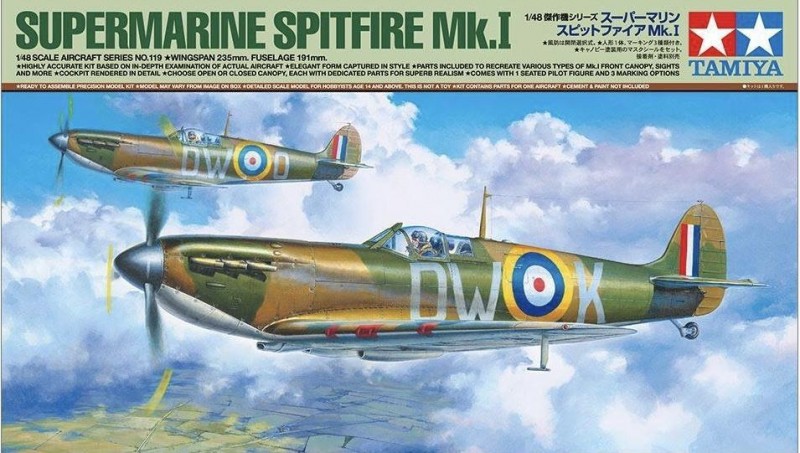
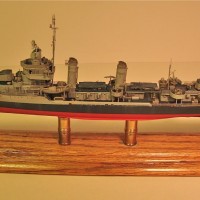
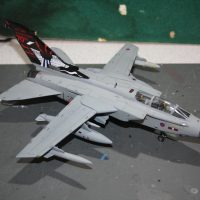
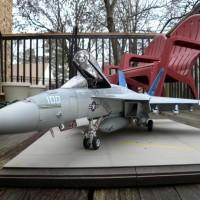
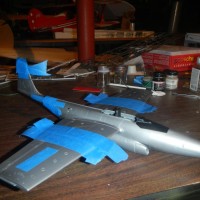
Thanks Tom I'm picking up mine this weekend so shall bear it all in mind.If memory serves me correctly Robert Stanford Tuck talks in some detail about the installation of armoured glass and armour plate in the Paul Brickhill book. Both glass and plate were late additions well after the Spitfire first came into service.
"10. Cockpit hatch crowbars: Not installed in Spitfires until February 1941. Period."
Once they got passed onto OTU's what color were those bars? I've seen them in silver or bare metal and interior grey-green or not at all... missing. A lot of Warbirds have them painted in red.
Also, the red muzzle patches not only told the ground crews that the guns had been fired but, they also helped keep the gun bay heated so the guns wouldn't jam.
I second the Bungay book. A brilliant, authoritative, and gripping read.
Thanks for the list, a great cut and paste reference from Mr. Heilig.
‘Liked’
Pictures? I need pictures, lots and lots of pictures
Thanks, Tom, “one stop” detail research. Small details mean so much.
Great pointers here. 5*! Echo the plus comments on Stephen Bungay's book.
Re the weathering issue and the warm sunny weather many associate with the summer of 1940, I seem to recall that this wasn't universally so during the build-up to Adlertag and also from sometime after 18 Aug and 24 Aug when the Luftwaffe had re-organised and started eroding the effectiveness of many of the southern RAF fighter stations. It's true however that turnover of Spits and Hurris over this period would have meant many a/c went into action "fresh" but I guess 3-5 sorties per day during good weather would have left a few marks, particularly caused by harried ground crews rushing to turn a/c around ready to go. Still, much as it may upset many, less weathering is probably more in reality. Paul
Thanks Tom. Always seeking to do better & every little bit helps.
Took me awhile to get around to say thanks for providing all this valuable info.
Very interesting information for detail aficionados. Me, I build out of the box and not worry about it. I used to really get into info like this. I'm glad that you posted it.